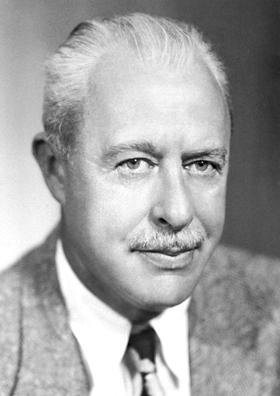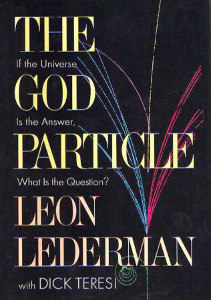Related Research Articles

John Bardeen was an American physicist and electrical engineer. He is the only person to be awarded the Nobel Prize in Physics twice: first in 1956 with William Shockley and Walter Brattain for the invention of the transistor; and again in 1972 with Leon N. Cooper and John Robert Schrieffer for a fundamental theory of conventional superconductivity known as the BCS theory.

Leon Max Lederman was an American experimental physicist who received the Nobel Prize in Physics in 1988, along with Melvin Schwartz and Jack Steinberger, for research on neutrinos. He also received the Wolf Prize in Physics in 1982, along with Martin Lewis Perl, for research on quarks and leptons. Lederman was director emeritus of Fermi National Accelerator Laboratory (Fermilab) in Batavia, Illinois. He founded the Illinois Mathematics and Science Academy, in Aurora, Illinois in 1986, where he was resident scholar emeritus from 2012 until his death in 2018.

Walter Houser Brattain was an American physicist at Bell Labs who, along with fellow scientists John Bardeen and William Shockley, invented the point-contact transistor in December 1947. They shared the 1956 Nobel Prize in Physics for their invention. Brattain devoted much of his life to research on surface states.

The Superconducting Super Collider (SSC) was a particle accelerator complex under construction in the vicinity of Waxahachie, Texas, United States.

James Maxwell Bardeen was an American physicist, well known for his work in general relativity, particularly his role in formulating the laws of black hole mechanics. He also discovered the Bardeen vacuum, an exact solution of the Einstein field equation.

The DØ experiment was a worldwide collaboration of scientists conducting research on the fundamental nature of matter. DØ was one of two major experiments located at the Tevatron Collider at Fermilab in Batavia, Illinois. The Tevatron was the world's highest-energy accelerator from 1983 until 2009, when its energy was surpassed by the Large Hadron Collider. The DØ experiment stopped taking data in 2011, when the Tevatron shut down, but data analysis is still ongoing. The DØ detector is preserved in Fermilab's DØ Assembly Building as part of a historical exhibit for public tours.

Spencer R. Weart is the former director of the Center for History of Physics of the American Institute of Physics (AIP) from 1971 until his retirement in 2009.

The God Particle: If the Universe Is the Answer, What Is the Question? is a 1993 popular science book by Nobel Prize-winning physicist Leon M. Lederman and science writer Dick Teresi.

Charles William Bardeen was an American educator and publisher. He devoted his career to improve the education system of the United States. He was the father of Charles Russell Bardeen and grandfather of two-time Nobel Prize winning physicist John Bardeen. He was referred to as C.W. by the later generations of Bardeens.
A Rutherford cable is a way of forming a superconducting electrical cable, often used to generate magnetic fields in particle accelerators. The superconducting strands are arranged as a many-stranded helix that has been flattened into a rectangular cable. It can typically only be applied to flexible superconductors that can be drawn into wire such as the niobium-based superconductors used in the Large Hadron Collider. The cable is named after the Rutherford Laboratory where the cable design was developed.
The High Energy Physics Advisory Panel (HEPAP) is a permanent advisory committee to the United States Department of Energy and the National Academy of Sciences, created in 1967 and organized under the Federal Advisory Committee Act (FACA) of 1972.

Priscilla Duffield worked on the Manhattan Project during World War II. She was secretary to Ernest O. Lawrence at the Radiation Laboratory, and to J. Robert Oppenheimer at the Los Alamos Laboratory. After the war she was executive assistant to directors of Scripps Institute of Oceanography and the National Accelerator Laboratory.

John Peoples Jr. is an American physicist who served as Fermilab's third director, served as director of the Sloan Digital Sky Survey, and oversaw the shutdown of the Superconducting Super Collider.
Laurie Mark Brown is an American theoretical physicist and historian of quantum field theory and elementary particle physics.
Adrienne W. Kolb is an American historian of science who worked for many years as the archivist and historian at Fermilab.
Catherine Lee Westfall is an American historian of science known for her work documenting the history of the United States Department of Energy national laboratories.
Donald J. Summers was a particle physicist who worked on experiments at several labs, including Fermilab, CERN, SLAC, and KEK.
Max Dresden was a Dutch-American theoretical physicist and historian of physics. He is known for his research in "statistical mechanics, superconductivity, quantum field theory, and elementary particle physics."
Michael Riordan is an American physicist, science historian and author.

The Fermilab bison herd was established in 1969 at the U.S. national laboratory in Batavia, Illinois, about 34 mi (55 km) west of Chicago, under the leadership of physicist, amateur architect and Wyoming native Robert R. Wilson. The herd grazes an 800-acre pasture adjacent to the Fermilab prairie, which sits atop the accelerator's underground Main Ring and Tevatron. The herd usually averages around 25 individuals; as of spring 2022, the head count of the herd was 32 individuals.
References
- ↑ birth data from the biographical entry in the book by Hoddeson et al.The Rise of the Standard Model; other biographical data from Hoddeson et al.Out of the Crystal Maze
- ↑ Fermilab Historian Lillian Hoddeson wins APS prize, 24 October 2011, Fermilab Today
- ↑ Lillian Hoddeson named to History of Science Chair at Illinois, 6 August 2007, U. of Illinois News Bureau
- ↑ 2012 Abraham Pais Prize in History Recipient, American Physical Society website
- ↑ History professor wins Guggenheim Fellowship for work on UI physicist, 13 April 2000, U. of Illinois News Bureau
- ↑ Women Fellows, APS Physics
- ↑ Wang, Zuoyue (August 1993). "Review of Out of the Crystal Maze: Chapters from the History of Solid-State Physics'" (PDF). Am. J. Phys. 61 (8): 766. doi:10.1119/1.17165.
- ↑ Ambegaokar, Vinay (2004). "Review of True genius: the life and science of John Bardeen by L. Hoddeson and V. Daitch" (PDF). Studies in History and Philosophy of Modern Physics. 35: 134–138. doi:10.1016/j.shpsb.2003.10.001.
- ↑ Mody, Cyrus C. M. (January 2010). "Review of Fermilab by L. Hoddeson, A. W. Kolb, & C. Westfall". Technology and Culture. 51 (1): 279–280. doi:10.1353/tech.0.0390. S2CID 109856523.
- ↑ Pickering, A. (1984). "Review of Particle Physics in Its Early Decades: The Birth of Particle Physics". Science. 226 (4670): 38–39. doi:10.1126/science.226.4670.38. ISSN 0036-8075. PMID 17815412.
- ↑ Dilworth, C. (27 July 1990). "Review of Pions to Quarks: Particle Physics in the 1950s edited by L. M. Brown, M. Dresden & L. Hoddeson". Science. 249 (4967): 426–427. Bibcode:1990Sci...249..426B. doi:10.1126/science.249.4967.426. PMID 17755946.
- ↑ Walker, Mark (April 1995). "Critical assembly: How (but not why) we got the bomb". Studies in History and Philosophy of Science Part B: Studies in History and Philosophy of Modern Physics. 26 (1): 117–120. Bibcode:1995SHPMP..26..117W. doi:10.1016/1355-2198(95)00004-D.
- ↑ Westfall, Catherine (2016). "Review of Tunnel Visions: The Rise and Fall of the Superconducting Super Collider". Technology and Culture. 57 (4): 1036–1037. doi:10.1353/tech.2016.0138. S2CID 114859448.